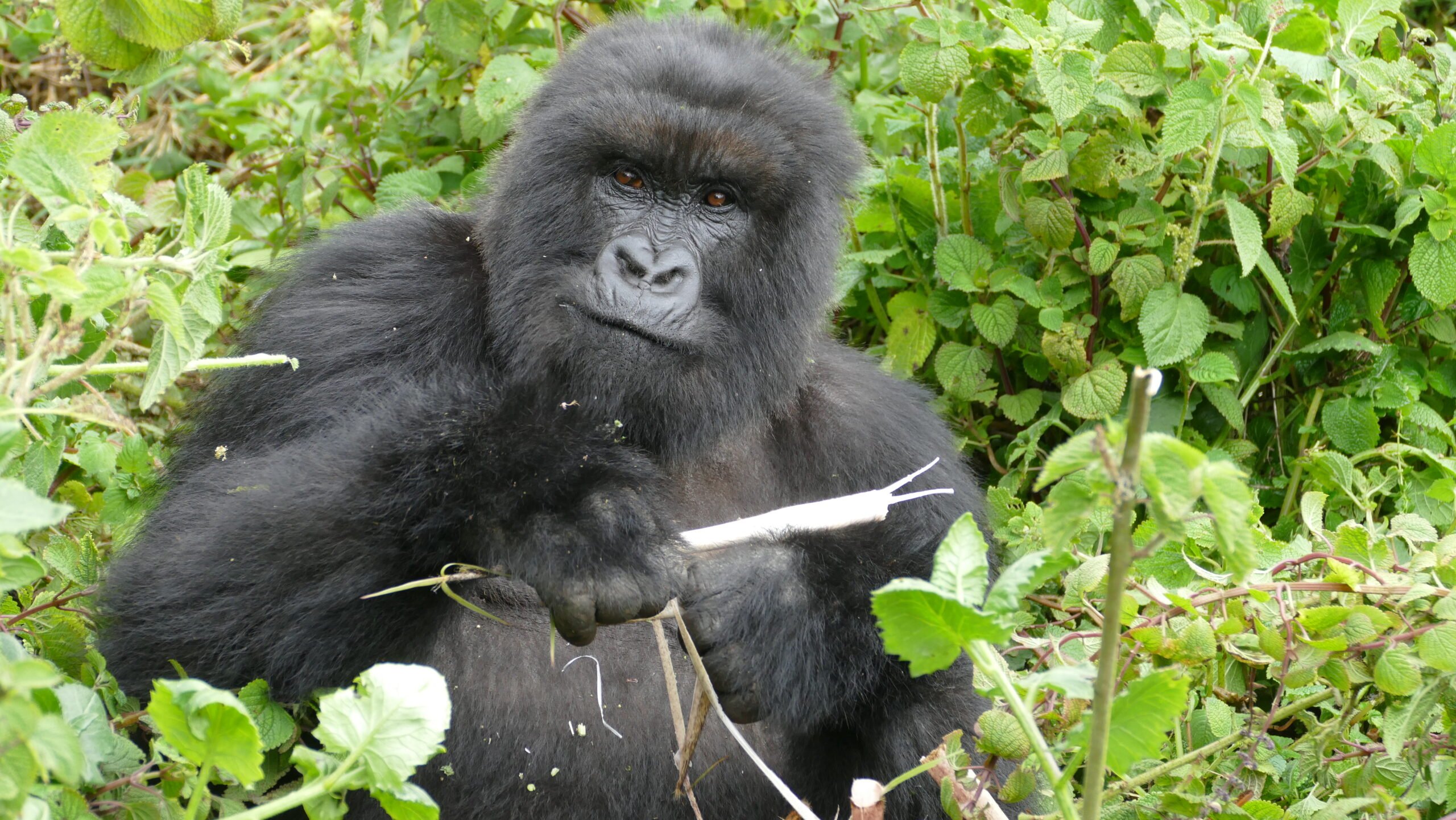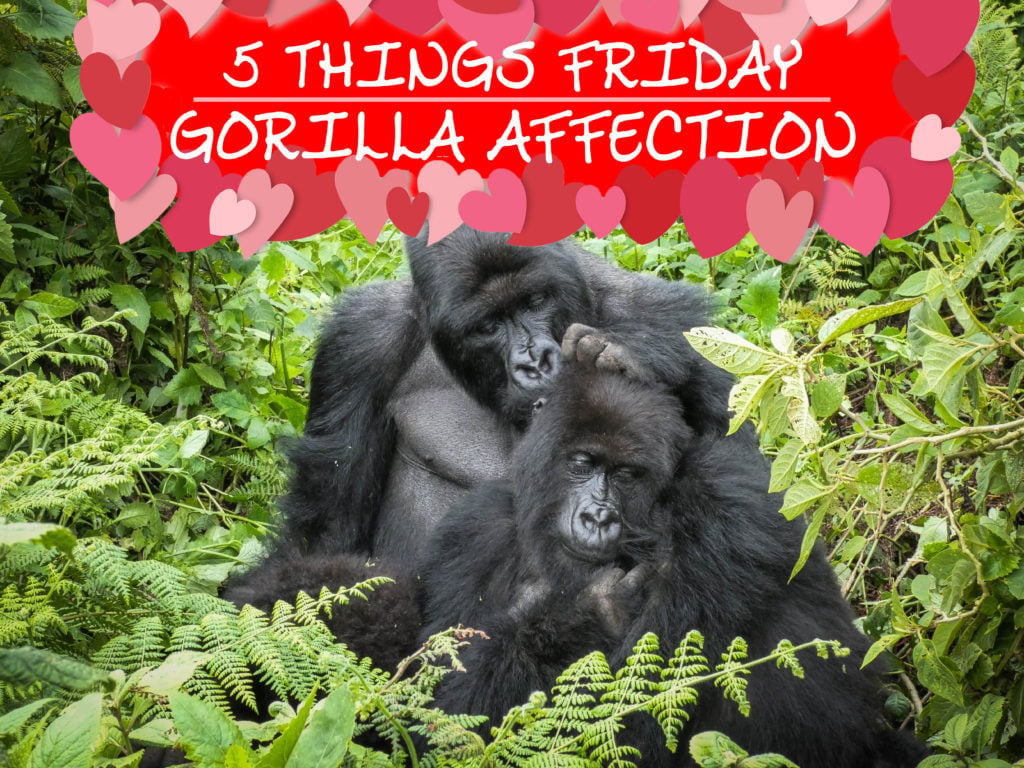
Today we are celebrating Valentine’s Day!
1: Gorillas create bonds through grooming
Grooming is an excellent way for gorillas to clean themselves and others, but in primate societies it is also a great way to form and strengthen social bonds between individuals. You can think of it as the equivalent to human holding hands. Gorillas tend to groom less than most primates, with most grooming between observed between mother and infant and males and females.
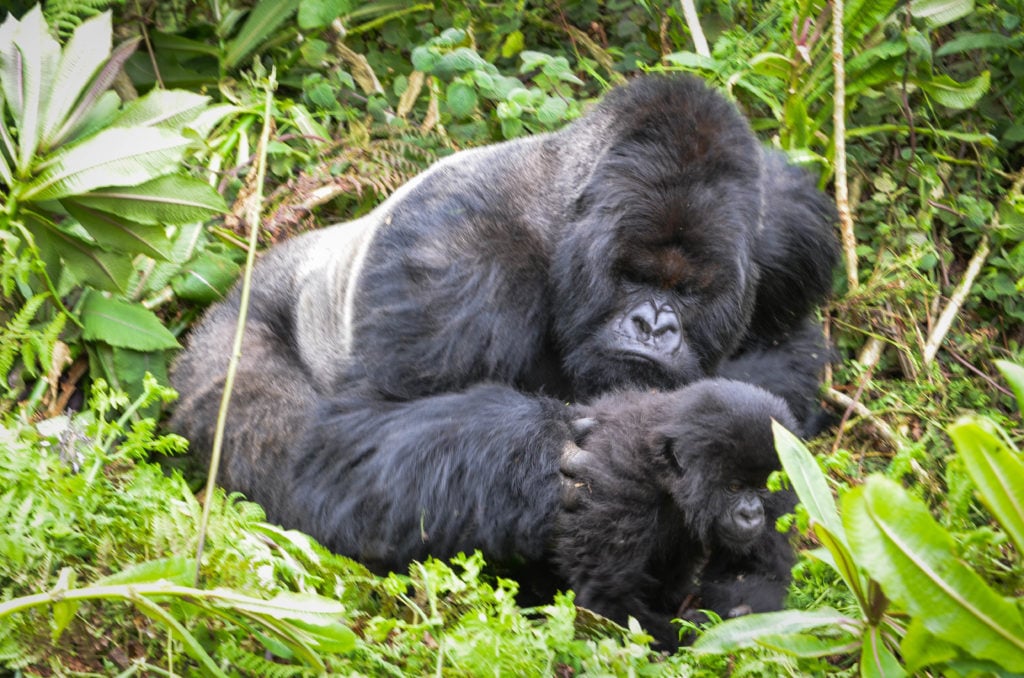
2: Proximity patterns give us an inside look at their social lives
On the social interaction scale, gorillas score pretty low. Unlike chimpanzees who are seen to embrace, hold hands and even kiss, gorillas are much more socially reserved. Thus, an important tool to help us understand underlying social relationships is proximity patterns—who is sitting near whom. We can create networks of social relationships simply by looking at how gorillas distribute themselves, especially during rest periods. Amazingly, by looking at their proximity patterns, researchers can also see reconciliation between individuals! One study found that after a fight, gorillas were more likely to sit near their former opponent, likely as a way to reestablish their social bond.
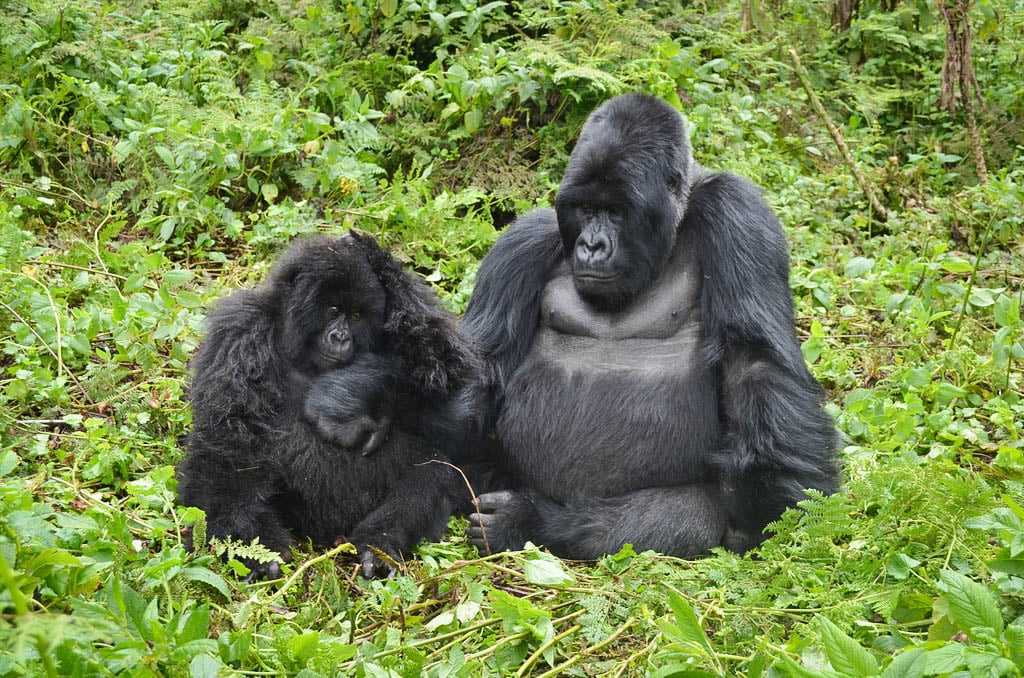
3: Male-female relationships are the glue of gorilla society
In other primate species, you see very strong bonds between individuals of the same sex, particularly in females. However, in gorilla societies, male/female relationships are usually stronger than female/female or male/male relationships. This may be because females are attracted to males that can be good defenders to protect their infants. Another reason may be because females generally do not meet until later in adulthood when they decide to transfer groups, resulting in weaker bonds. In fact, when a male dies, if there is not another male in the group to take over leadership, the females will not stay together on their own but look for other groups to join, often separating in the process.
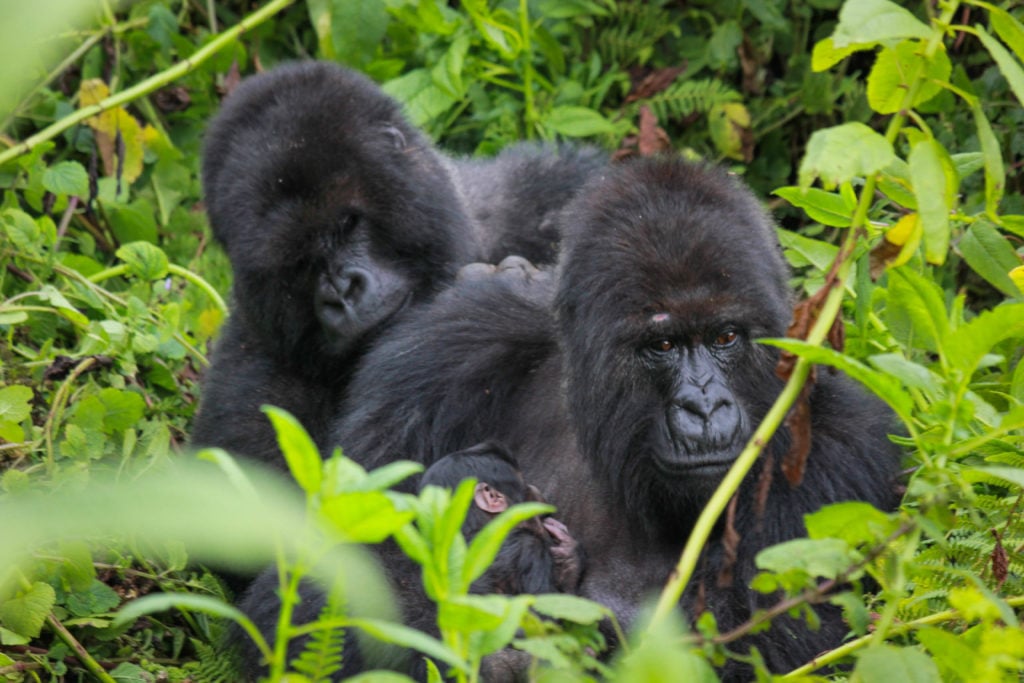
4: Family first
The average gorilla group size is about 10 individuals. Mountain gorillas, however, appear to have the greatest flexibility in group size and often can live in much larger groups. For instance, the largest gorilla group ever recorded was Pablo’s group which reached 65 members. From observations on larger groups like Pablo’s, we were able to collect data on many individuals that are related to each other and have found out that when given the opportunity to live in a social group with related individuals, females will spend more time together than with unrelated females.
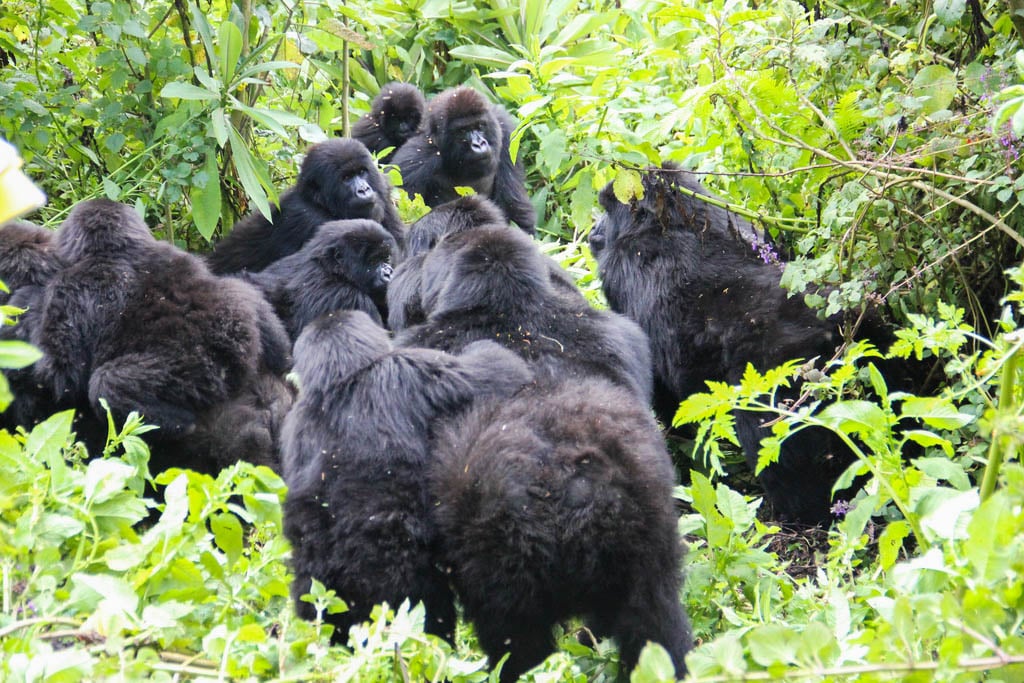
5: Gorillas don’t mate for life
While adult male and female gorillas may spend long periods of time together, gorillas don’t mate for life. Females can be seen transferring groups many times throughout their lives, giving them the opportunity to live with and produce offspring with many males. However, through our observations, we have seen individual gorillas stay together for a majority of their reproductive years, an example being female Tuck and male Titus who were together 21 years! It just shows the level of individual variation there is among gorillas.




